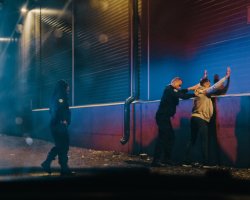Have We Been Ignoring Synthetic Drug Use Amongst Teens?

There are many drugs in use among teens today. Most of them have seen a skyrocketing spike over the past decade. With marijuana, heroin, prescription drug abuse, and alcohol all being used by record numbers of young people. There has been the birth of a new breed drug which may not have received the attention it ought to.
This is the synthetic drug or designer drugs. Over the past ten years, it came into existence and has since been rising in numbers among teens and adults. There are three basic categories of synthetics: synthetic marijuana (called K2 or Spice), synthetic methamphetamine (called Bath Salts) and herbal ecstasy. Currently, the most used synthetic is synthetic marijuana.
What Is Synthetic Marijuana?
The oddity about this drug is that up until recently it was legal. It is basically plant leaves that are sprayed with a chemical substance that, when smoked has a similar effect on the brain as THC. It has been sold under labels such as “plant food”, “potpourri” and “not for human consumption”. It has been sold in smoke shops across the country until just recently when laws were passed making the drug illegal. Crackdowns on these shops ensued after that.
Some of the dangers of synthetic marijuana are:
- acute anxiety or paranoia
- panic attacks
- hallucinations
- persistent coughingfeelings of nausea or vomiting
- unable to stay with one thought for longer than a few seconds
- irregular heartbeats
- psychotic episodes
- tremors or seizures.
When educated on these dangers it is easy to see why this drug would be banned.
The Other Synthetic Drugs

“Bath Salts” are another drug that follows the same ideas of synthetic marijuana, where they imitate another drug. In this case, “Bath Salts” are mimicking cocaine. Until recently it was thought that synthetics were safer alternatives to the illicit street drugs. However, officials report that the drug can cause hallucinations, thoughts of suicide, violent behavior, paranoia, reduced motor control and physical ailments. Maybe the most violent drug-related attack in recent years, this summer’s horrific “zombie attack” in Miami is being linked to this powerful drug.
Herbal Ecstasy is snorted, swallowed or smoked. Until the recent laws passed making it illegal, it has been sold in convenience stores under the brand names “Herbal Ecstasy,” “Cloud 9” and “Ultimate Xphoria”.
Ephedrine (the main active ingredient in Herbal Ecstasy) affects the cardiovascular and central nervous system. It can cause seizures, heart attacks, and strokes.
What to Do About The Growing Synthetic Abuse Issue
These synthetics have seen a rapid rise in usage due to the image that was pushed that they were safer and legal. Fortunately, both of these points are becoming discredited, as the laws have been passed saying that they are illegal and dangerous to your health.
It is important to keep promoting the truth about the dangers of these drugs as they are anything but safe and natural. If you know of someone using these drugs contact us for help to get them off of these dangerous and illegal substances.
Narconon has been educating youth and adults alike on the side effects and problems with synthetics through drug prevention lectures delivered across the country. Every community member, parent, and adult should make sure that kids know about how dangerous synthetics can be so that they do not try them in the first place. By working together with organizations like Narconon and with each other we can educate the youth and stop them from using drugs.
For more information on the growing synthetic problem or to find help for a loved one, contact Narconon today or visit https://www.narconon.org/drug-abuse/synthetics/.
Sources:


 ®
®